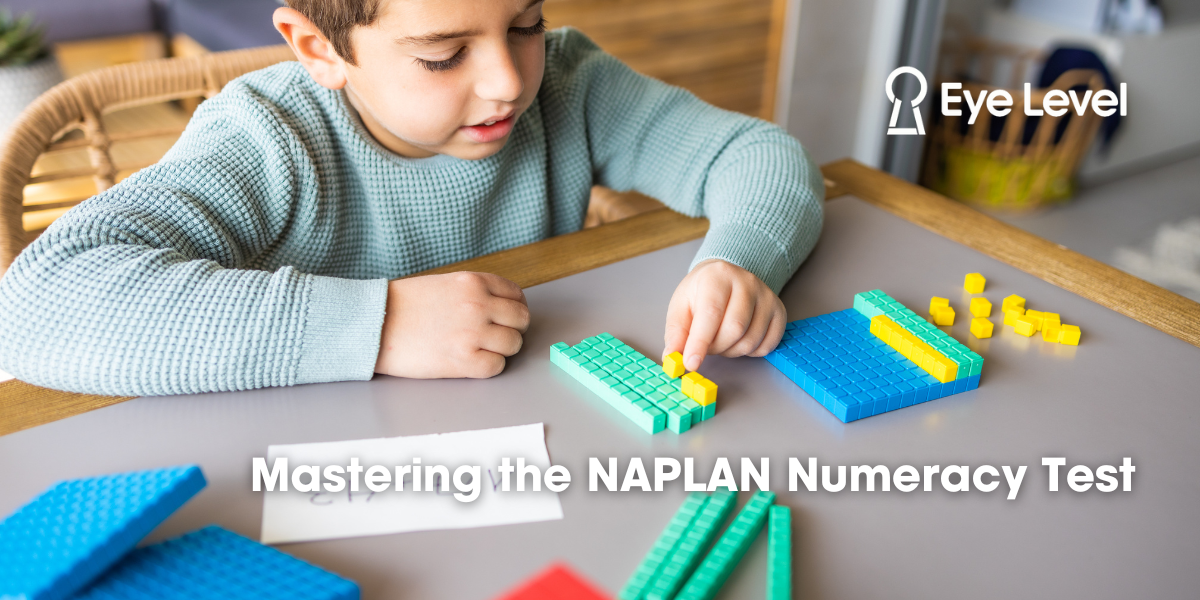The NAPLAN numeracy test assesses math proficiency and problem-solving. Success is achievable by implementing some strategies and developing an understanding of concepts. Here we provide guidance on problem-solving methods, math concepts, and practical applications to excel.
Understanding the NAPLAN Numeracy Test
The NAPLAN numeracy test assesses students’ ability to apply mathematical concepts in real-world contexts, solve problems, and communicate mathematical ideas effectively. It covers various topics, including numbers and algebra, measurement and geometry, and statistics and probability, depending on the students’ Year level. Understanding the structure and content of the test is the first step towards success.
Problem-Solving Strategies
1. Read Carefully and Analyse:
Before attempting any question, carefully read the problem statement and identify the critical information provided. Highlight or underline important details such as numbers, units, and relationships between quantities. Pay attention to keywords such as “total,” “difference,” “product,” and “per cent,” which provide clues about the operation to be performed.
2. Break Down the Problem:
Break down complex problems into smaller, more manageable parts. Identify the central question or objective, then consider the steps or operations required to solve it. Visual aids such as diagrams, charts, and tables can help clarify relationships and organise information effectively.
3. Choose the Right Strategy:
Select the most appropriate problem-solving strategy based on the nature of the problem and the information provided. Strategies may include:
- Trial and error.
- Logical reasoning.
- Working backwards.
- Using patterns or relationships.
- Applying mathematical formulas or algorithms.
Consider different approaches and choose the one that best suits the problem.
- Check for Reasonableness:
After solving a problem, take a moment to review your solution and check for reasonableness. Does the answer make sense in the context of the problem? Are the units consistent? Did you use appropriate estimation techniques to verify your calculations? Double-check your work for accuracy and ensure your solution aligns with the conditions.
Key Mathematical Concepts
1. Numbers and Algebra:
Understand fundamental concepts such as place value, operations (addition, subtraction, multiplication, division), fractions, decimals, percentages, ratios, and algebraic expressions—practice solving equations, simplifying expressions, and interpreting numerical patterns.
2. Measurement and Geometry:
Familiarise yourself with units of measurement, conversions, perimeter, area, volume, angles, symmetry, transformations, and properties of geometric shapes. Visualise geometric figures and apply geometric principles to solve problems involving shapes and spatial relationships.
3. Statistics and Probability:
Learn basic statistical concepts such as data representation, measures of central tendency (mean, median, mode), variability, graphs, charts, and probability. Analyse data sets, interpret graphs and tables, and make predictions based on probability calculations.
Practical Applications
1. Real-World Contexts:
Practice applying mathematical concepts to real-world scenarios and everyday situations. Engage in hands-on activities and problem-solving tasks that promote critical thinking and mathematical reasoning.
2. Collaborative Learning:
Collaborate with classmates, teachers, tutors, and family members to reinforce learning and exchange ideas. Discuss different problem-solving strategies, share insights, and work together to solve challenging problems. Embrace a growth mindset and view mistakes as opportunities for learning and improvement.
3. Practice, Practice, Practice:
Consistent practice is essential for mastering mathematical concepts and problem-solving skills. Utilise practice tests, sample questions, online resources, and interactive tutorials to familiarise yourself with the format and types of questions found in the NAPLAN numeracy test. Set aside dedicated study time and monitor your progress as you work through practice materials.
Conclusion
Mastering the NAPLAN numeracy test requires a combination of problem-solving strategies, mathematical concepts, and practical applications. By understanding the structure of the test, employing effective problem-solving techniques, and building a solid foundation in mathematical concepts, students can confidently approach the numeracy section and excel in their performance. With perseverance, dedication, and a willingness to learn, every student has the potential to achieve success.


